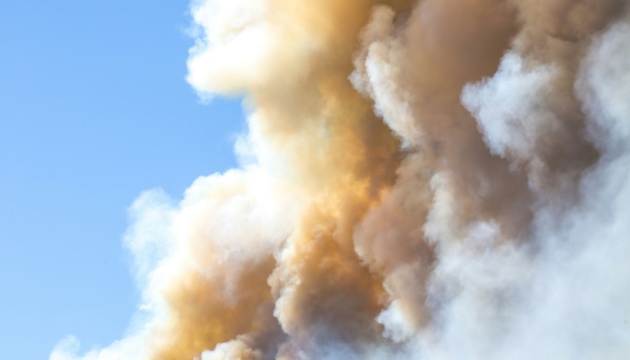Trump and Putin begin bilateral meeting
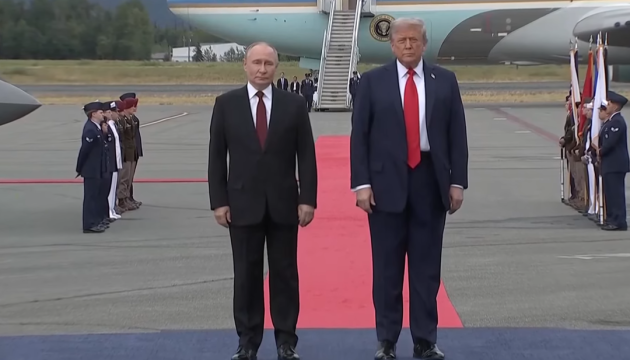

‘I didn’t see the kneepads on that pic, so just deleted and reposted with a different pic,’ Piers Morgan tweeted after pulling the original post down

© Good Morning Britain, ITV
This is the historic moment US President Donald Trump and Russian President Vladimir Putin shake hands as the world leaders arrived in Alaska for crunch Ukraine peace talks.

© REUTERS
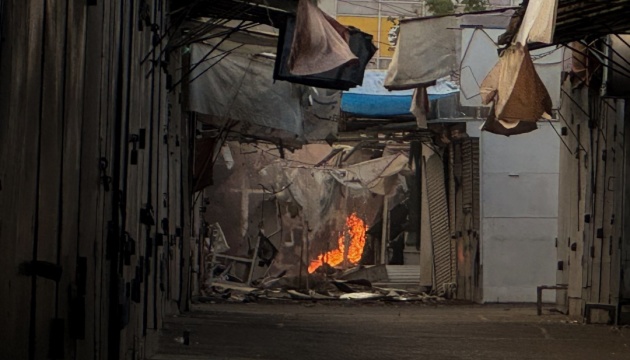
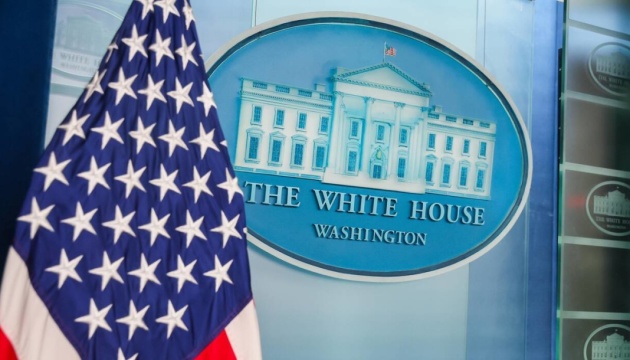
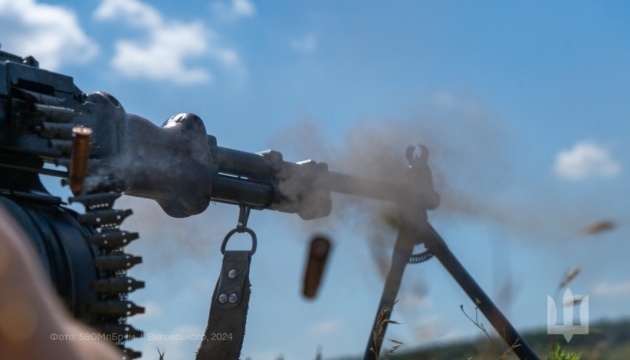
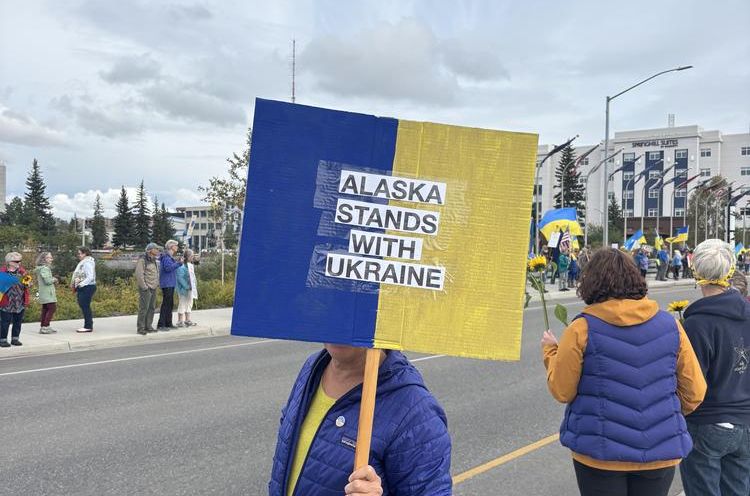
On 15 August, Alaska’s Anchorage is hosting a meeting between US President Donald Trump and Russian leader Vladimir Putin at Joint Base Elmendorf-Richardson, a Cold War–era military installation once used to counter the Soviet Union.
10:30 PM:
10:10 PM: Trump and Putin met next to their planes.
US President Donald Trump shakes hand of Russian ruler Vladimir Putin in Alaska
— Euromaidan Press (@EuromaidanPress) August 15, 2025
Since 2022, Russia's war in Ukraine has killed 13,800 civilians, including childrenPravda Gerashchenko pic.twitter.com/Ae97fgUSjy
10:00 PM: Trump and Putin will hold talks in “three on three”. Russian Foreign Minister Sergey Lavrov and Putin’s aide Yuri Ushakov will join the Russian president’s the negotiations with Trump. Meanwhile, US Secretary of State Marco Rubio and US Special Envoy Steve Witkoff will meet with Kremlin’s team from the American side, CNN reports.
9:50 PM: US President Donald Trump landed at the Joint Base Elmendorf-Richardson in Anchorage, Alaska. Russian ruler Vladimir Putin also arrived at the base, around 30 minutes after Trump, according to Sky News.

Editorial: As the Trump-Putin summit takes place in Alaska, the prospects for a lasting settlement in Ukraine are, at best, only at the ‘end of the beginning’ stage

Vladimir Putin’s envoy Kirill Dmitriev met a bear in Alaska ahead of upcoming crunch talks on ending the Russia-Ukraine war.
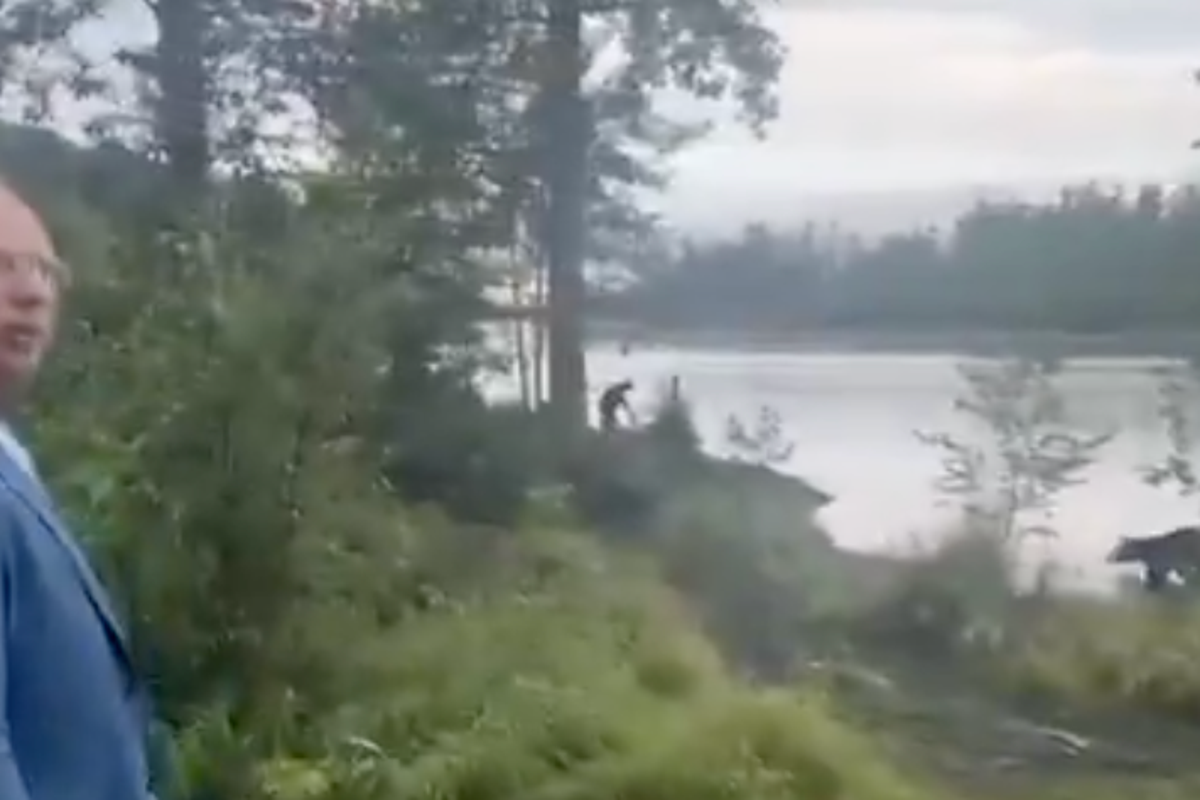
© Kirill Dmitriev
Russia has been accused of sending ‘signals’ ahead of the summit in Alaska

© Getty/istock
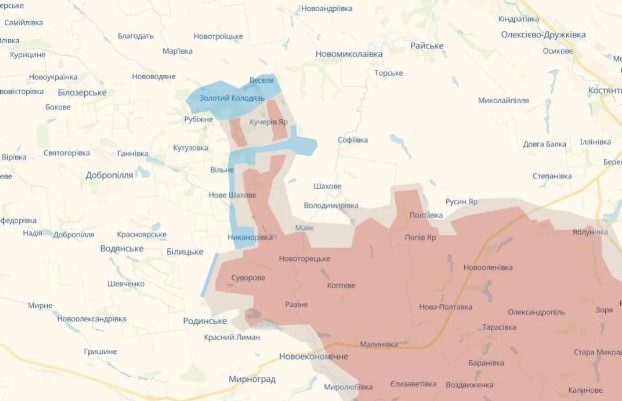
Ukrainian soldiers were able to break the horns of war of Russian occupiers near Dobropillia in Donetsk Oblast, analysts at DeepState report.
Dobropillia is a city leading to Pokrovsk, which Russia has been trying to capture for one and a half years.
Ahead of the Trump-Putin talks in Alaska, Russia intended to show strength and present the capture of Donetsk Oblast as inevitable. Moscow needs these territories for a more favorable deal, but for the Russian occupiers, it ends in destruction.
“I thank our 79th and 82nd Air Assault Brigades, which are fighting precisely there, on the Dobropillia axis,” Zelenskyy said.
He also highlighted the Azov soldiers, who took defensive positions on the Pokrovsk front to block Russian forces advancing in Donetsk Oblast.
The corps moved into what has been described as “one of the most difficult sections of the front.”
Previously, the area was defended by Tactical Group “Pokrovsk,” which “absolutely could not cope with defense on this section,” according to military sources.
Meanwhile, Azov National Guard Corps soldiers, together with adjacent units, say they have cleared six settlements on the Pokrovsk axis: Hruzke, Rubizhne, Novovodyane, Petrivka, Vesele, and Zolotyi Kolodiaz.
According to the Ukrainian military, 271 Russian occupiers were killed, 101 were wounded, and 13 were taken prisoner. Additionally, one Russian tank and two armored combat vehicles were destroyed or damaged, along with 37 vehicles and motorcycles, and three artillery pieces.
Azov emphasizes that Russian advances in this sector have been halted, though “stabilization operations” are still ongoing.
Earlier, DeepState reported that Russian occupiers were close to breaking through on the Pokrovsk axis.
Russian forces =dramatically expanded their breakthrough along the Pokrovsk–Kostiantynivka road. What began as a 10-kilometer salient in May 2025 near Malynivka, Nova Poltavka, and Novoolenivka extended to 23 kilometers.
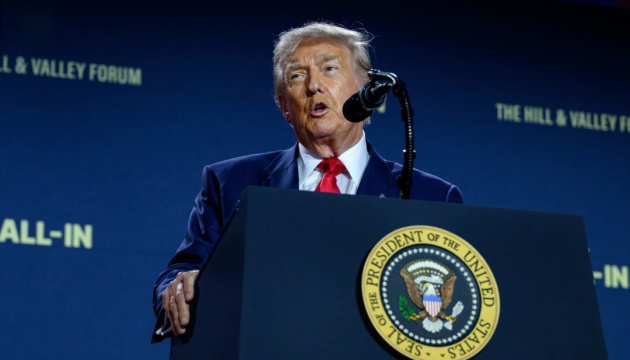

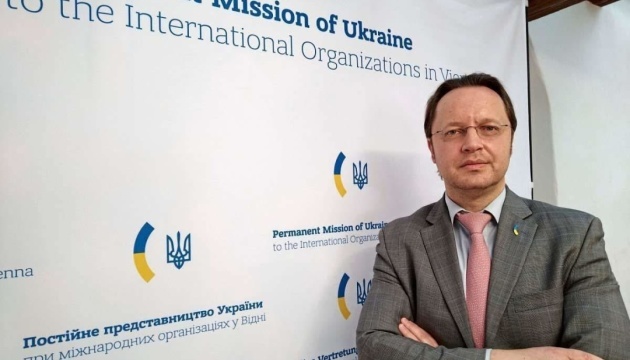
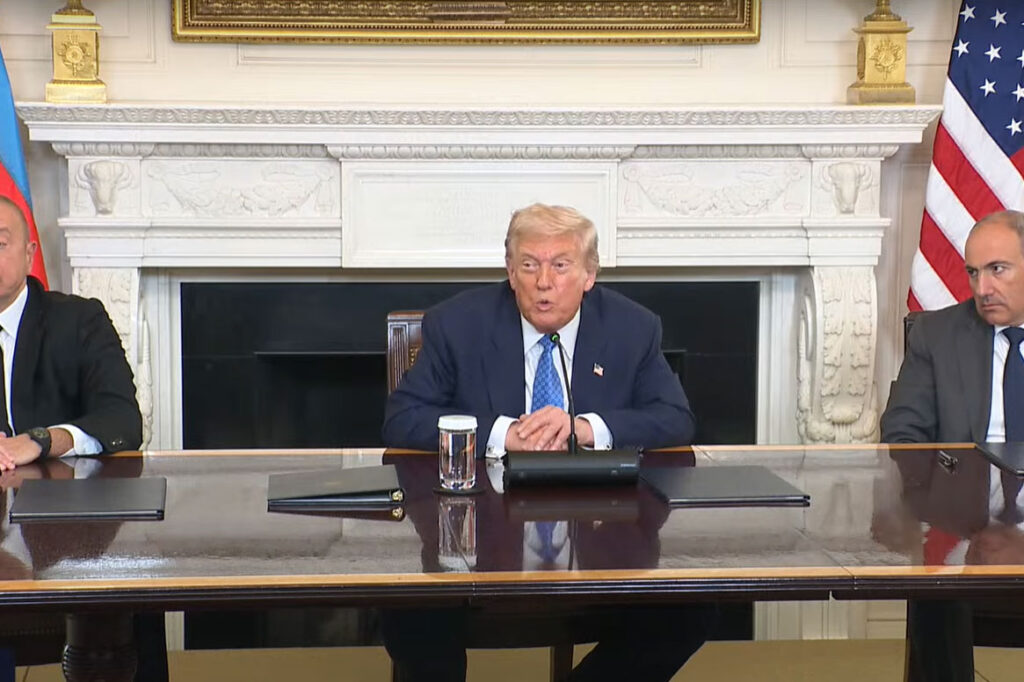
During the Alaska meeting, the issue of territorial exchange will be discussed in particular, but any concrete decisions on this will be made by Ukraine, US President Donald Trump told journalists aboard Air Force One en route to Alaska, according to Clash Report.
His statement came ahead of his meeting with Russian leader Vladimir Putin, which will focus on the end of Russia’s war against Ukraine. One possible subject of discussion is the ceding of part of Ukrainian territory to Russia. At the same time, there is no hint of any security guarantees that the West might offer to prevent another Russian invasion.
The Russian side does not plan to sign any documents or agreements following the Alaska meeting. According to Kremlin Spokesperson Dmitry Peskov, Trump and Putin may address the press to announce agreements reached verbally.
Trump added that he is attending the meeting not to negotiate on behalf of Ukraine, but to bring all parties to the negotiating table. According to the American leader, the US will provide Ukraine with certain security guarantees together with European countries, but this will not be done under NATO’s umbrella.
Trump was also asked to comment on Russian strikes in Ukraine. He speculated that Putin is doing this to strengthen his position ahead of the negotiations. He said that in this way, Putin hopes to help them reach the best possible deal. He also suggested that the killings of Ukrainians could simply be linked to his genetics.
At the same time, the US president expressed some optimism about today’s talks with Putin. He claimed that he likes the process because they want to do business, but the Russians will not conduct business until the war is resolved.
Trump also reminded that the Russian economy is going through difficult times, so if the negotiations fail, Russia will face great problems.
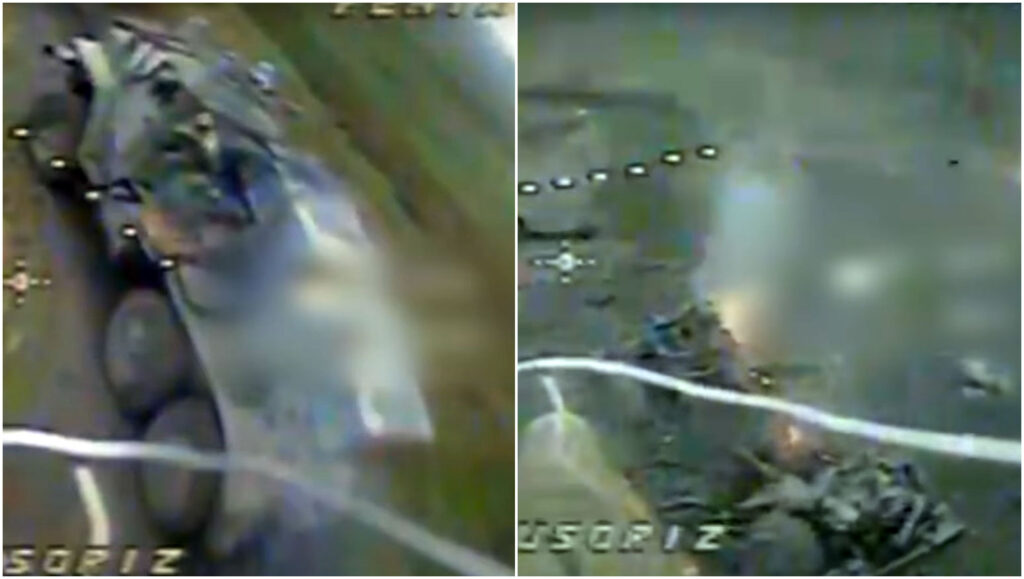
Ukrainian border guard drones from the Phoenix unit have destroyed a Russian BM-21 Grad multiple launch rocket system, a main battle tank, and up to 10 Russian soldiers in Donetsk Oblast. On 14 August, the State Border Guard Service released footage of the strikes, showing FPV drones hitting the targets with precision.
According to the Border Guard Service, the operation targeted high-value Russian assets in the oblast. In addition to the Grad and the tank, the strikes destroyed a UAZ-452 “Bukhanka” van, a Ural military truck, other vehicles, several motorcycles used for troop movement, and fortified positions.
The released video shows FPV drones striking Russian soldiers, on foot and vehicles, the Grad launcher on the move, and the tank — the latter positioned inside a building at the moment of impact.
Preliminary assessments by the Border Guard Service suggest the operation eliminated about ten Russian soldiers.
Defense Express, commenting on the released video, reported that the border guard pilots used unmanned aerial systems capable of both reconnaissance and precision strikes, allowing the unit to operate deep inside contested areas while minimizing exposure to Russian air defenses.
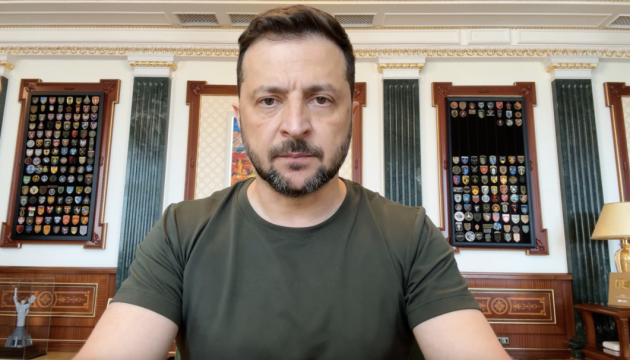
Vladimir Putin stopped at a fish factory whilst on his way to Alaska to meet Donald Trump to discuss ending the Russia-Ukraine war.

© AP
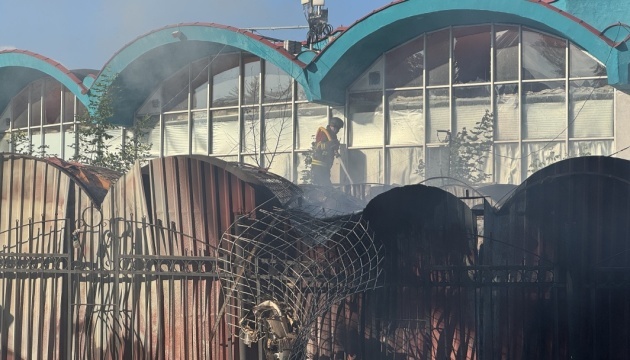
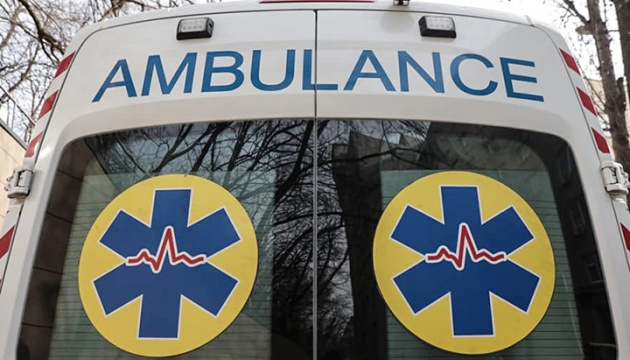

© AP
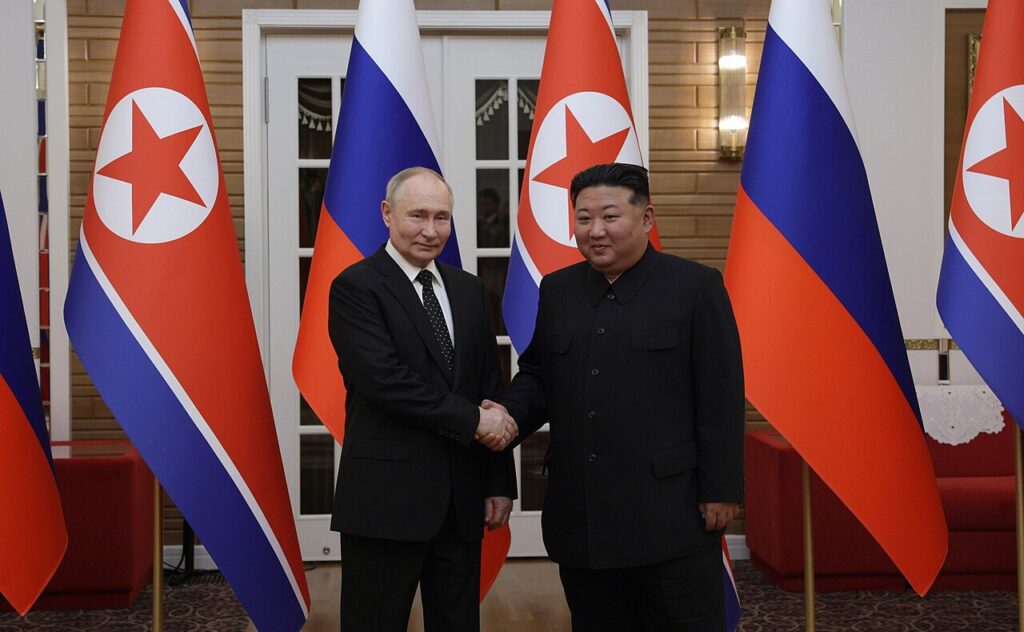
Russian President Vladimir Putin hailed North Korean troops sent to fight in Ukraine as “heroic” in a letter to Kim Jong Un, North Korean state media reported Friday.
The letter comes as North Korea plans to send an additional 25,000 to 30,000 troops to assist Russia in their war against Ukraine, tripling Pyongyang’s military commitment from the original 11,000 soldiers deployed in November 2024.
It also reflects Russia’s growing reliance on North Korean support, with Ukrainian intelligence reporting that 60% of artillery shells fired by Russian forces recently were North Korean-made, compared to only 30% that were Russian-produced.
In a letter marking the anniversary of Korea’s liberation from Japanese rule, Putin recalled how Soviet Red Army units and North Korean forces fought together to end Japan’s colonial occupation, saying “This was demonstrated by the heroic participation of the DPRK soldiers in liberating the territory of the Kursk region from the Ukrainian occupiers.”
Putin’s letter coincided with a visit by a Russian delegation to Pyongyang, where State Duma Speaker Vyacheslav Volodin thanked
Kim for sending “excellent soldiers” to Ukraine. Kim mentioned he had a phone call with Putin on Wednesday, agreeing to expanded bilateral cooperation.
Ukrainian intelligence reports indicate around 4,000 of the original 11,000 North Korean soldiers were killed or injured in Kursk Oblast, according to Western officials. Despite these casualties, North Korea plans additional deployments.
North Korea confirmed in April 2025 for the first time that it had deployed troops to Russia to support its war against Ukraine, marking the country’s first participation in a major armed conflict since the Korean War.
The troop deployment stems from a mutual defense treaty signed by Putin and Kim in June 2024, which requires both nations to provide immediate military assistance if either is attacked.
Ukrainian intelligence confirms Russia and North Korea have reached agreements to establish drone production capabilities on North Korean territory, with Russia providing blueprints for Iranian Shahed-type drones.
Russia has also agreed to provide MiG-29 and Su-27 fighter jets to North Korea in exchange for military support, according to US Indo-Pacific Commander Admiral Samuel Paparo.
South Korean estimates indicate North Korea sent over 15,000 containers of weapons since September 2023, with shipments including 9 million shells, hundreds of launchers, and KN-23 ballistic missiles that now account for 70% of Russian artillery use.
Putin’s letter came three days ahead of Friday’s summit between Putin and Trump, the first between a sitting US and Russian president since 2021, as Trump seeks to broker an end to Russia’s more than three-year war in Ukraine.
The deepening Russia-North Korea axis represents what Kim Jong Un has described as the Korean Peninsula being the front line in a new Cold War, with Pyongyang as a key player in a revived Cold War axis that includes Moscow and Beijing.
South Korean intelligence reports North Korea receives approximately $200 million, rice supplies, and advanced space technology in exchange for its military support, including assistance with launching military reconnaissance satellites.
You could close this page. Or you could join our community and help us produce more materials like this.
We keep our reporting open and accessible to everyone because we believe in the power of free information. This is why our small, cost-effective team depends on the support of readers like you to bring deliver timely news, quality analysis, and on-the-ground reports about Russia's war against Ukraine and Ukraine's struggle to build a democratic society.
Become a patron or see other ways to support.
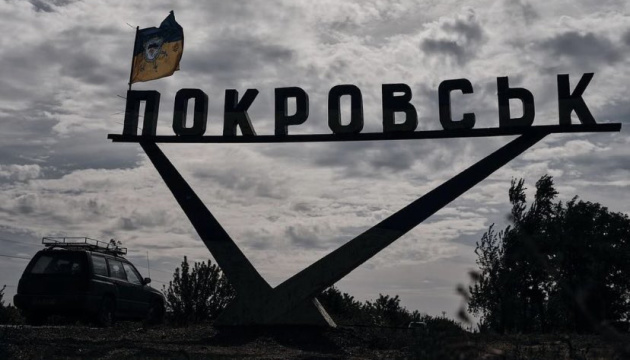

© AFP via Getty Images
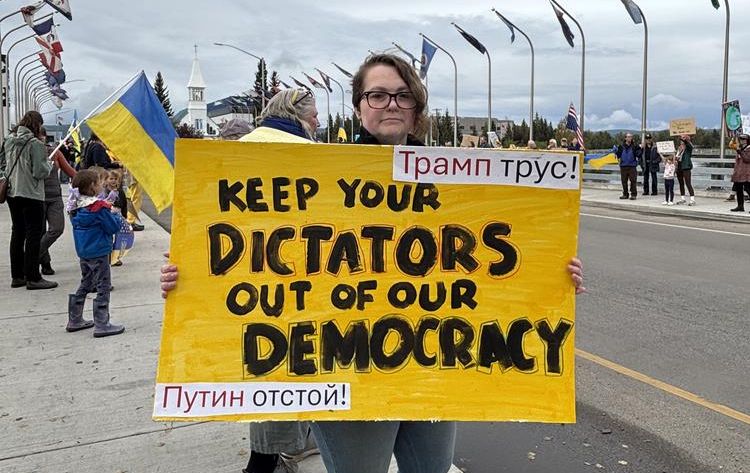
Hundreds of demonstrators lined Anchorage streets Wednesday with Ukrainian flags and signs reading “Putin won’t stop at Ukraine” as they protested Vladimir Putin’s arrival for Friday’s 11:00 a.m. summit with Donald Trump at Joint Base Elmendorf-Richardson.
Trump’s admission of needing “give and take” on boundaries between Russia and Ukraine has protesters worried he’ll legitimize Putin’s demands for complete control of four Ukrainian oblasts while keeping President Volodymyr Zelenskyy out of decisions about his own country’s future. Trump told Fox News Radio there’s a “25% chance” the Alaska talks could fail, as per BBC.
Benny Kobert, who leads the Fairbanks NAACP chapter, didn’t mince words about Putin setting foot on US soil. “I don’t like it at all,” he told Euromaidan Press. “There was a reason why Putin was restricted from touching United States soil because of the crimes that he’s been committing all over the world and the genocide that he committed on his own people.”
Kobert worries about Trump’s track record of following through on his most controversial promises. “With all the misinformation, this is something that we really need to pay attention to because everything Trump is touting and wanting to do, he’s finding some way of doing it. And this is detrimental to our democracy.”
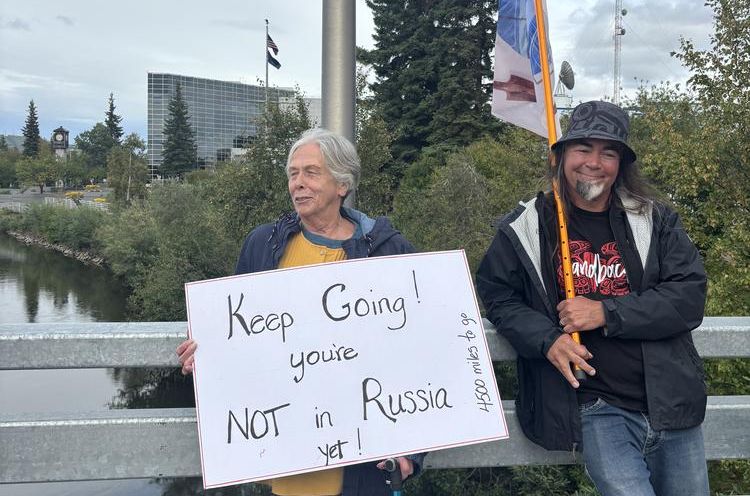
Russia’s ceasefire conditions aren’t exactly subtle: complete control of Donetsk and Luhansk oblasts, full occupation of Kherson and Zaporizhzhia, NATO membership ruled out for Ukraine, and limits on Ukraine’s armed forces. Ukraine rejects these terms as surrender.
Svetlana Pestronak brought both personal pain and professional insight to Wednesday’s protest. The longtime Alaskan researcher was born in Soviet Belarus, and her Ukrainian husband Igor hails from Odesa. She described standing “in solidarity with Ukraine” while honoring “the victims of mass rape, including child rape, the victims of torture and mutilation and murder.”
She criticized Alaska’s leadership for embracing what she called “a very misleading and dangerous message” about the summit’s supposed benefits, warning it plays into “long-standing Russian propaganda that we take Ukraine first, Alaska is next.”
Carmen Brooks couldn’t hide her outrage that Zelenskyy wasn’t invited to Friday’s discussions about his country’s future. “Putin is a war criminal and he is being welcomed here to Alaska,” she told Euromaidan Press. “Not inviting Zelenskyy to a meeting that involves his country and major decisions doesn’t seem very right.”
What makes this worse? European leaders had to extract assurances from Trump in a separate call about five principles including keeping Ukraine “at the table” for follow-up talks and avoiding land swaps before a ceasefire.
When asked whether Putin should be arrested, Brooks replied simply: “Yes.”
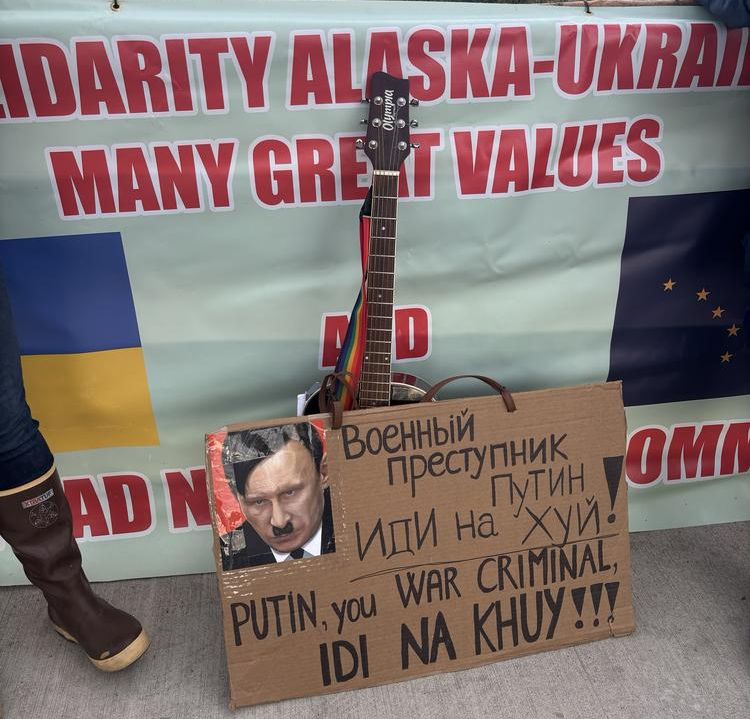
Protester after protester brought up Trump’s elimination of the State Department unit tracking Ukraine’s kidnapped children. “Trump deleted the department that was tracking the missing children of Ukraine and I have a real big problem with that,” one protester said. “These parents deserve answers.”
The discontinued Yale University program had documented over 30,000 Ukrainian children abducted by Russian forces before Elon Musk’s Department of Government Efficiency cut its funding.
Environmental activist Cass said she came because: “I’m here protesting to show support for Ukraine and the war effort, but also to protest a war criminal being on US soil, specifically Alaska soil, and also protesting authoritarianism and fascism in general, which Putin and Trump both embody.”

Friday’s summit happens at the same military installation once used to counter Soviet expansion. Protesters see the irony: Putin’s presence validates exactly the imperial ambitions this base was built to deter.
Andrew Keller demanded that “Alaskans need to have input” in any resource negotiations rumored to be part of potential deals, “not Trump.” He called Putin’s presence “totally inappropriate” and argued that “you don’t invade the borders of a democratically elected free state.”
The protests come as Trump suggested he would know “in the first few minutes” whether Friday’s meeting was worth continuing, adding it would “end very quickly” otherwise.
Igor Pasternak, who left Odesa in 1999 and now calls Alaska home, told Euromaidan Press that seeing local support provided “a little bit healing” despite his pain over “not only what Russia does to Ukraine but also the reaction from some members of our government.”
Meanwhile, Russian propagandists are using the summit to revive territorial claims to Alaska itself, leveraging the summit’s symbolic venue choice to fuel imperial fantasies about reclaiming the territory Russia sold to the United States in 1867.
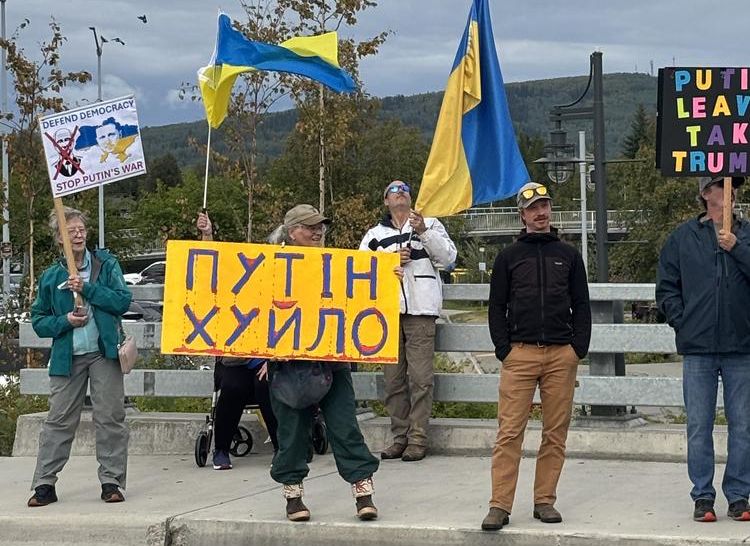
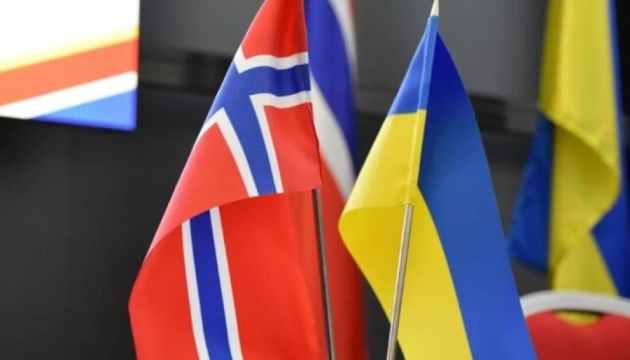
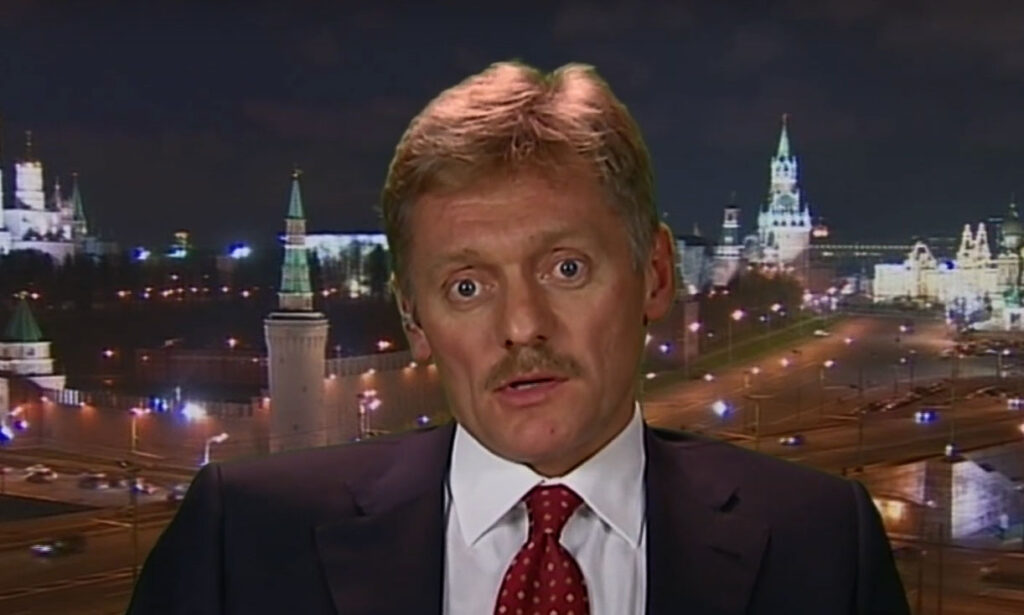
The Kremlin’s delegation has arrived in Alaska. A historic summit between Russian ruler Vladimir Putin and US President Donald Trump is beginning in Anchorage, but the Kremlin has already warned — no documents will be signed, UNIAN reports.
Dmitry Peskov, the Kremlin’s spokesperson, said the war in Ukraine will be the key topiс.
“President Putin and President Trump intend to talk, they are ready to talk, and they will discuss the most difficult issues,” he claimed.
He stressed that no documents are expected to be signed at the meeting, but during a joint press conference Putin will “outline the agreements and understandings that will be reached.”
Peskov clarified that the current talks are between Russia and the US, and that “discussion with the Ukrainian side will come at later stages.” He also described the war in Ukraine as “a complex and multifaceted substance” and added that “they are unlikely to receive an adequate response from the Europeans.”
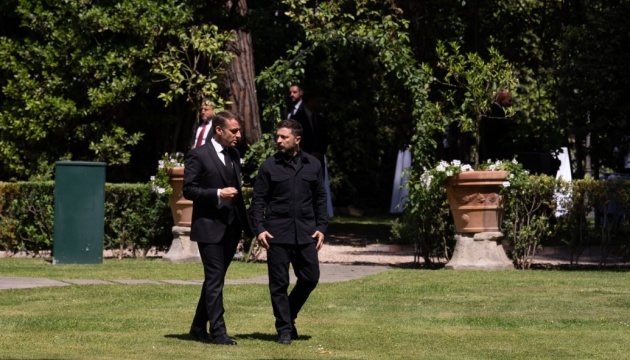
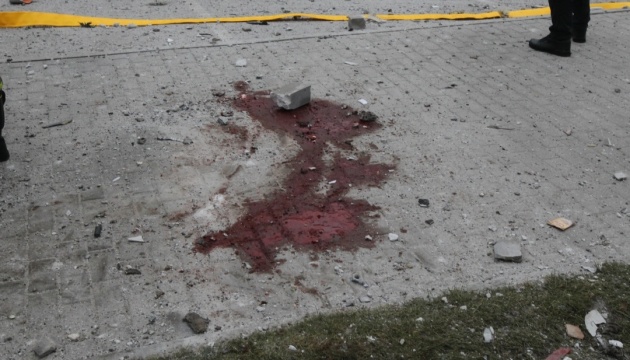
Clinton, a longtime rival of Trump’s, said she would personally nominate the president for the elusive price if he brokered a peace deal that did not ‘capitulate’ to Putin

© Getty Images
Watch live as Donald Trump and Vladimir Putin hold “high stakes” talks on Ukraine in Alaska on Friday (15 August).

© AP
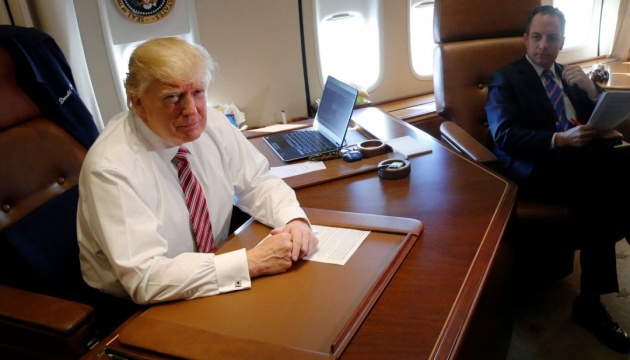
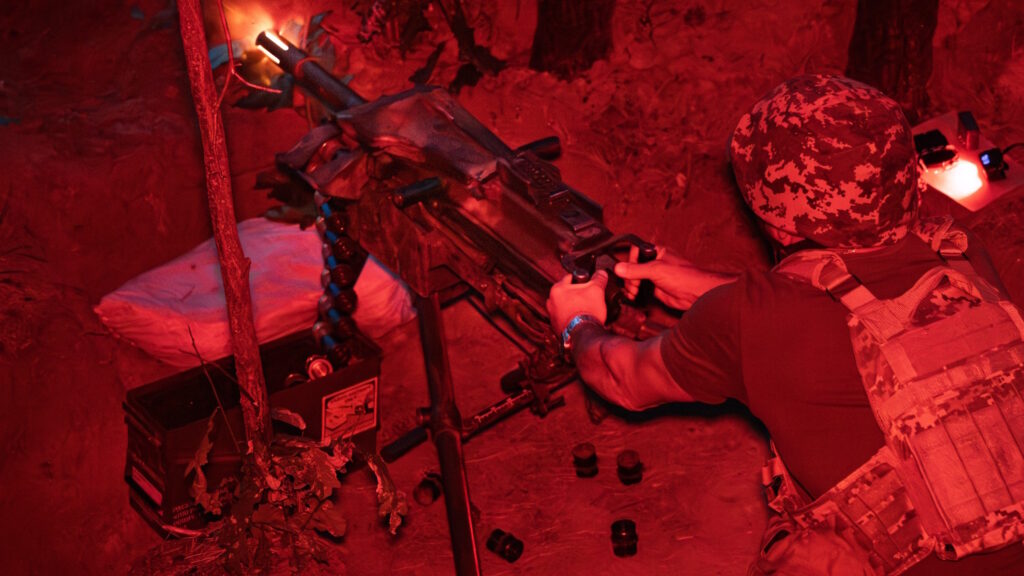
Russia is redeploying forces from Sumy Oblast to Donetsk and Zaporizhzhia, preparing for decisive battles in the Pokrovsk sector. The buildup coincides with preparations for US President Donald Trump’s and Russian leader Vladimir Putin’s meeting in Alaska, where ending the war in Ukraine will be discussed, Ranok.Live reports.
Spokesman for the Dnipro Operational-Strategic Grouping Victor Trehubov says more than 100,000 Russian troops are concentrated in the Pokrovsk front despite heavy losses. He explains that Moscow troops are willing to sacrifice positions in Sumy Oblast to create an illusion of success in Donetsk Oblast.
“That’s a huge number for such a scale — enough to attack a European country, not just one unfortunate small Pokrovsk,” Trehubov says.
In the past two days, Ukrainian defenders have repelled 53 Russian assaults in more than 20 settlements in the Pokrovsk sector. The Defense Forces, including the 1st NGU Azov Corps, eliminated 151 occupiers, wounded over 70, and captured eight Russian soldiers.
“As a result of the fighting, the enemy is suffering heavy losses,” Azov stated.
Analysts believe the troop concentration in Donetsk Oblast is an attempt by the Kremlin to create a media effect and strengthen Putin’s negotiating position ahead of the 15 August Alaska summit with Trump, UNN reports. The key topic there will be a potential ceasefire in Ukraine.

A surge in Russian ballistic missiles with enhanced maneuvering capabilities is straining Ukraine’s Patriot air defense systems, The War Zone reports. The US Defense Intelligence Agency has confirmed the upgrades are making interceptions harder, forcing Ukraine’s defenders to deal with unpredictable flight paths and radar decoys.
Ukraine has received three Patriot batteries from the United States, two from Germany, one from Romania, and another jointly supplied by Germany and the Netherlands. The War Zone notes the systems are paired with various interceptors, and US officials said in July they were working with European allies to send more. Patriot remains Ukraine’s only robust defense against ballistic missiles.
A Special Inspector General report citing a DIA response says the Ukrainian Air Force has struggled to consistently stop upgraded Russian missiles, TWZ says. The improvements allow warheads to change trajectory and perform maneuvers instead of following a traditional ballistic arc.
The report does not name the missile types or detail the upgrades. However, Ukrainian Air Force spokesperson Yurii Ihnat in May mentioned Russia’s Iskander-M and North Korea’s KN-23 as examples. Both are short-range ballistic missiles and among the most common in Russian strikes. Ihnat said Russia’s improved weapons complicate interception but do not make it impossible.
Russia’s heavy use of Iskander-Ms early in the 2022 invasion exposed an existing decoy capability, though not all missiles carried it. Ihnat’s comments suggest Russia may now be fitting decoys to more of them. Reports have long indicated Iskander-Ms can fly depressed trajectories and maneuver mid-flight to challenge defenses. Russia claims its Kinzhal missile, derived from the Iskander-M, has high maneuverability, and those developments may have influenced ground-launched designs.
The North Korean KN-23 resembles the Iskander-M and reportedly can perform a “pull-up” maneuver in its terminal phase. Ukraine’s defense intelligence chief Kyrylo Budanov told The War Zone in June that Russia worked with North Korea to improve the KN-23’s accuracy, possibly boosting other missile types as well.
Patriot’s confirmed difficulties raise concerns for other militaries, including the US Army, which is working to expand and improve its own Patriot forces.
Ukraine entered the war with a limited number of Soviet-era S-300V1 systems, which had some anti-ballistic capability. It is unclear if any remain in service, and interceptor stocks would have dwindled over three years of fighting.
Russia has scaled back missile and drone attacks ahead of the 16 August meeting between US President Donald Trump and Russian President Vladimir Putin.

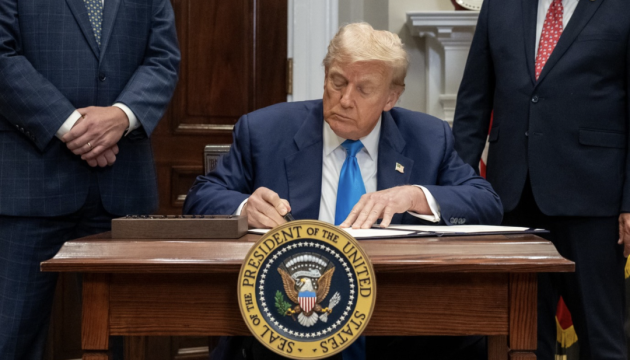
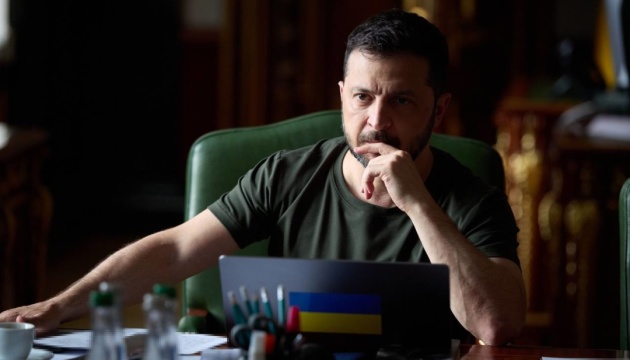
Ukraine – and Europe – will be hoping that Trump can hold his nerve when he meets Putin in Alaska on Friday

© Getty
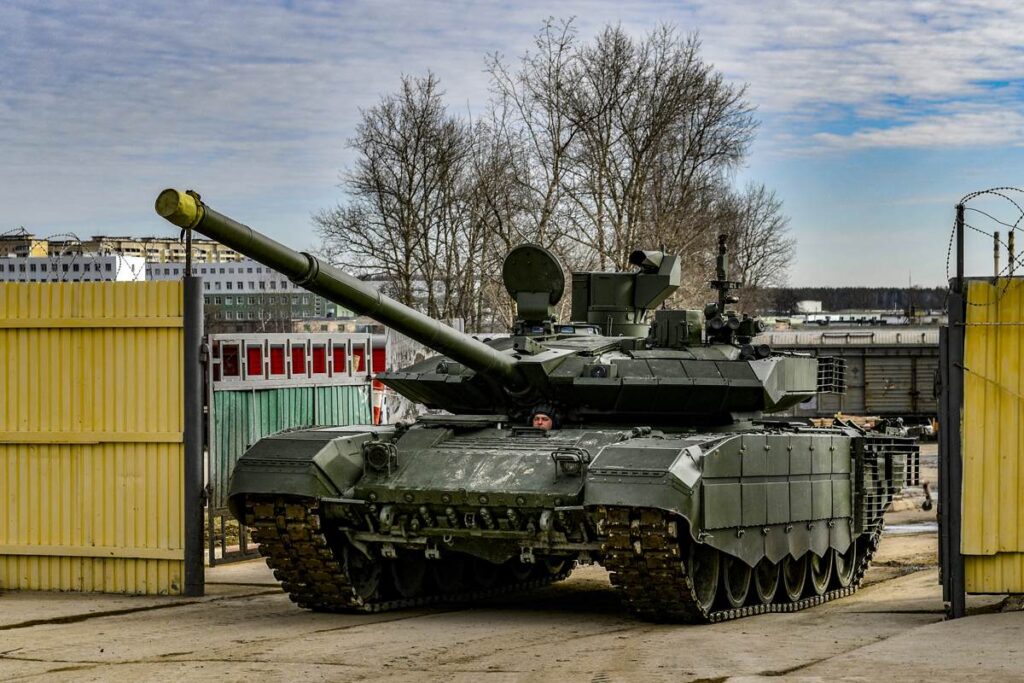
Russia is building hundreds of new T-90M tanks a year—enough to rebuild some of its battered tank regiments and establish an armored reserve for Russia’s wider war on Ukraine … or for some future war against NATO.
That’s the conclusion of a recent study by the pro-Ukraine Conflict Intelligence Team. But there’s a problem. According to one expert, CIT is wrong. Sergio Miller, an analyst and former British Army intelligence officer, believes Russia is struggling to complete even 100 T-90Ms a year—and most of those it does complete are revamped T-90As rather than all-new vehicles.
Journalist David Hambling was the first to report on Miller’s claim.
It’s unclear, based on the available public evidence, who is right: CIT’s experts or Miller. But it matters. The scores of tanks CIT believes Russia is producing that Miller thinks are vaporware are enough to equip at least one armored regiment every year.
The 51-ton, three-person T-90M is heavily armored and boasts modern optics and a powerful 125-millimeter main gun. It’s one of the best tanks in the world.
Has there been a “dramatic fall-off” in tank production at Russia’s Uralvagonzavod tank factory, in Sverdlovsk Oblast 1,600 km from Ukraine, to borrow Hambling’s phrasing? Or is Uralvagonzavod churning out fresh tanks at a rate faster than any tank factory in a Western country?
“According to our estimates, Uralvagonzavod produced 60 to 70 T-90M tanks in 2022,” CIT reported. “In 2023, amid efforts to mobilize the defense industry, output may have increased to 140 to 180 tanks, and by 2024, it may have surpassed 200 units annually, possibly approaching a production rate of 250 to 300 tanks per year.”
The word “may” is doing a lot of work here, but it’s worth noting that CIT isn’t alone in perceiving an increasing rate of tank production. A few months ago, Czech analyst Jakub Janovksy concluded Uralvagonzavod has been building between 150 and 200 T-90Ms annually.
For comparison, the US Army’s own tank plant in Ohio, operated by General Dynamics Land Systems, has been producing just a few dozen M-1 Abrams tanks annually—down from 90 a year in the early 2020s.
To be fair to the Americans, they’re not mired in a costly war, and they plan to boost Abrams production with the introduction of a new variant in the coming years. At the same time, the Russian military has shifted to infantry-led assaults in Ukraine, and now deploys—and loses—just a few tanks every month.
That shift means any fresh tanks Russia produces—through new production or by fetching old Cold War tanks from long-term storage and upgrading them—can go toward replacing the roughly 4,000 tanks the Russians have lost in Ukraine. Unless the fighting in Ukraine shifts back to mechanized operations, this restored tank corps can be held in reserve for future conflicts.

But that’s a moot point if Miller is right and Uralvagonzavod, or UVZ, isn’t building very many T-90Ms. “In total, UVZ only claimed to deliver 100 tanks in 2024,” Miller told Hambling. “I have no idea where the high figures quoted by some Western reporting come from. There is no evidence this is the case.”
In addition to taking Uralvagonzavod’s delivery announcements at face value, Miller scrutinized images of tank shipments in Russia to arrive at his lower production figure. So far this year, he concluded, Russia has completed 10 or fewer T-90Ms.
If Miller is right, Uralvagonzavod could be on track to deliver a fraction of the T-90Ms that Janovsky and CIT anticipate. With so few new tanks, the Kremlin would struggle to restore its depleted armored regiments.
Why T-90M production may be freefalling—if indeed it is—isn’t hard to guess. “Rather than being new builds, the ‘new’ T-90Ms seen in 2024 were in fact upgraded T-90As,” Hambling wrote. “Approximately 300 of the earlier version tanks were produced.”
“It is likely that all available T-90As were withdrawn and upgraded to the T-90M standard,” Hambling added. “In theory, UVZ is capable of producing new T-90Ms from scratch,” he added. But manufacturing a T-90M from the tracks up requires precise welding, which in turn requires a skilled workforce and attentive quality control.
Squeezed by sanctions and competing with the war in Ukraine for men, Uralvagonzavod may have labor and supply problems. “The dramatic fall-off suggests that after they ran out of T-90As to upgrade, UVZ has struggled to make new T-90Ms,” Hambling wrote.
We may not know who’s right about T-90M production unless and until Russia either re-deploys tanks to Ukraine in large numbers—or launches an armored assault on NATO’s eastern flank. Maybe it’s best not to know for now.

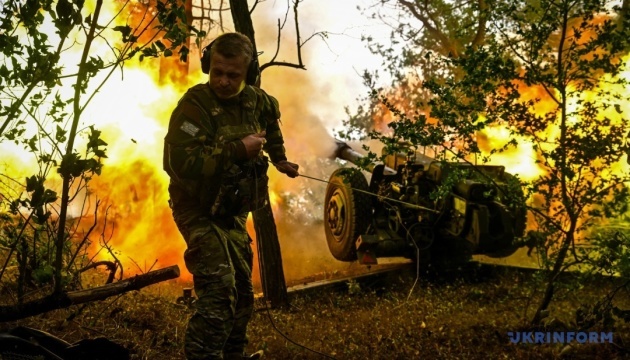
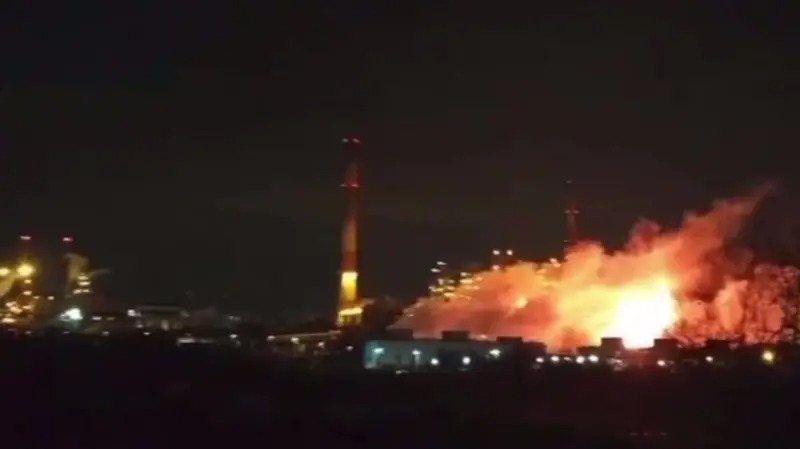
Ukraine’s long-range strikes inside Russia have cost Moscow over $74 billion since January, according to fresh data from the General Staff of the Armed Forces of Ukraine. The military says the economic toll equals more than 4% of Russia’s annual GDP, with most hits landing deep inside its territory.
On 15 August, the General Staff released infographics detailing the scope and impact of deep strikes carried out since 1 January 2025. The figures show that 42% of the attacks targeted oil refineries, making them the single most-hit category. Storage facilities were the second most common target at 37%, followed by oil pumping stations at 10%, terminals and ports at 7%, and other facilities at 4%.
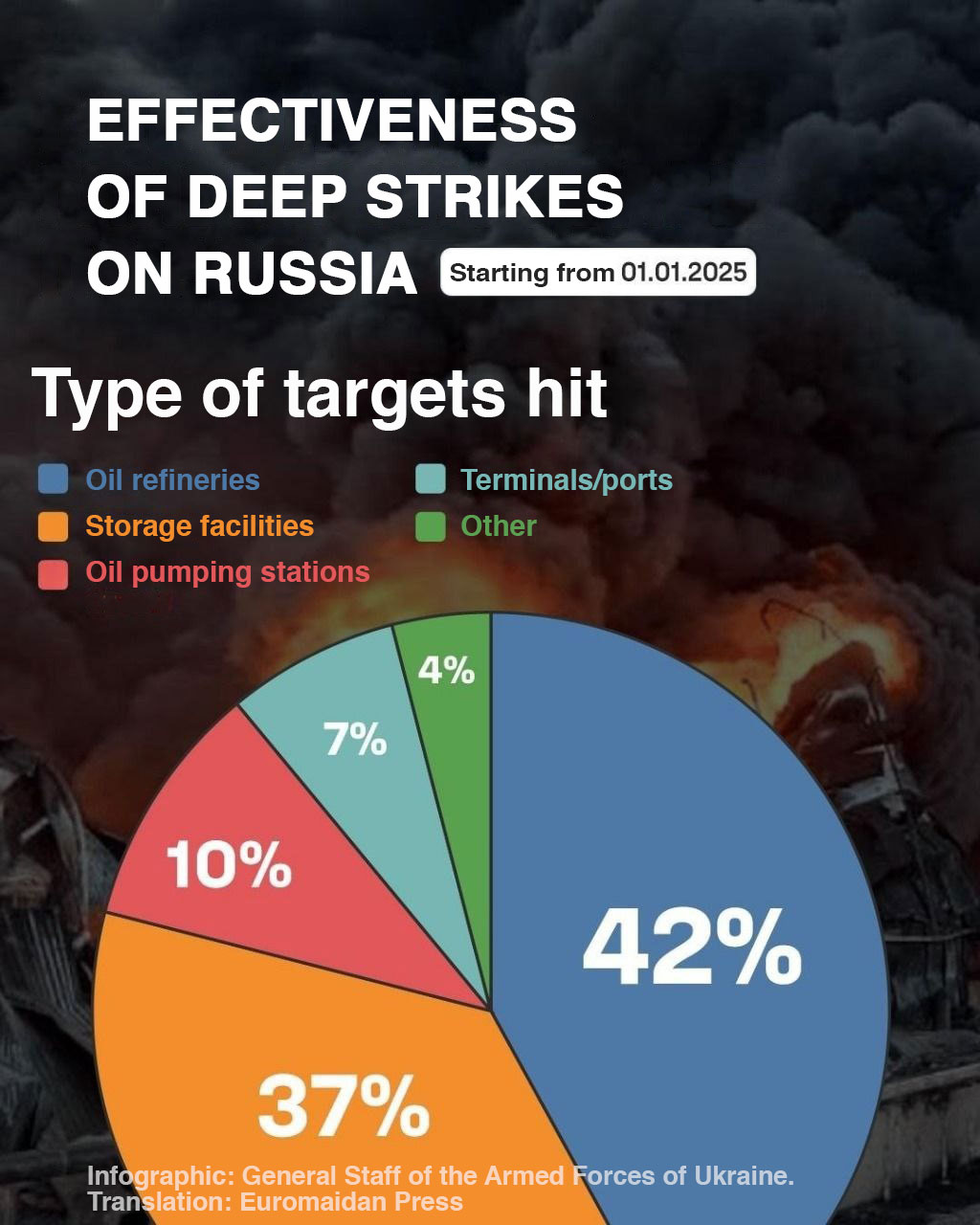
The data also breaks down the distances of strikes from Ukraine’s border. Nearly 39.22% of hits landed between 500 and 1,000 km inside Russia, while 37.25% were between 200 and 500 km. Only 13.73% were within 200 km of the border. More than 10% of the strikes reached beyond 1,000 km, a range that underscores Ukraine’s long-range capabilities.
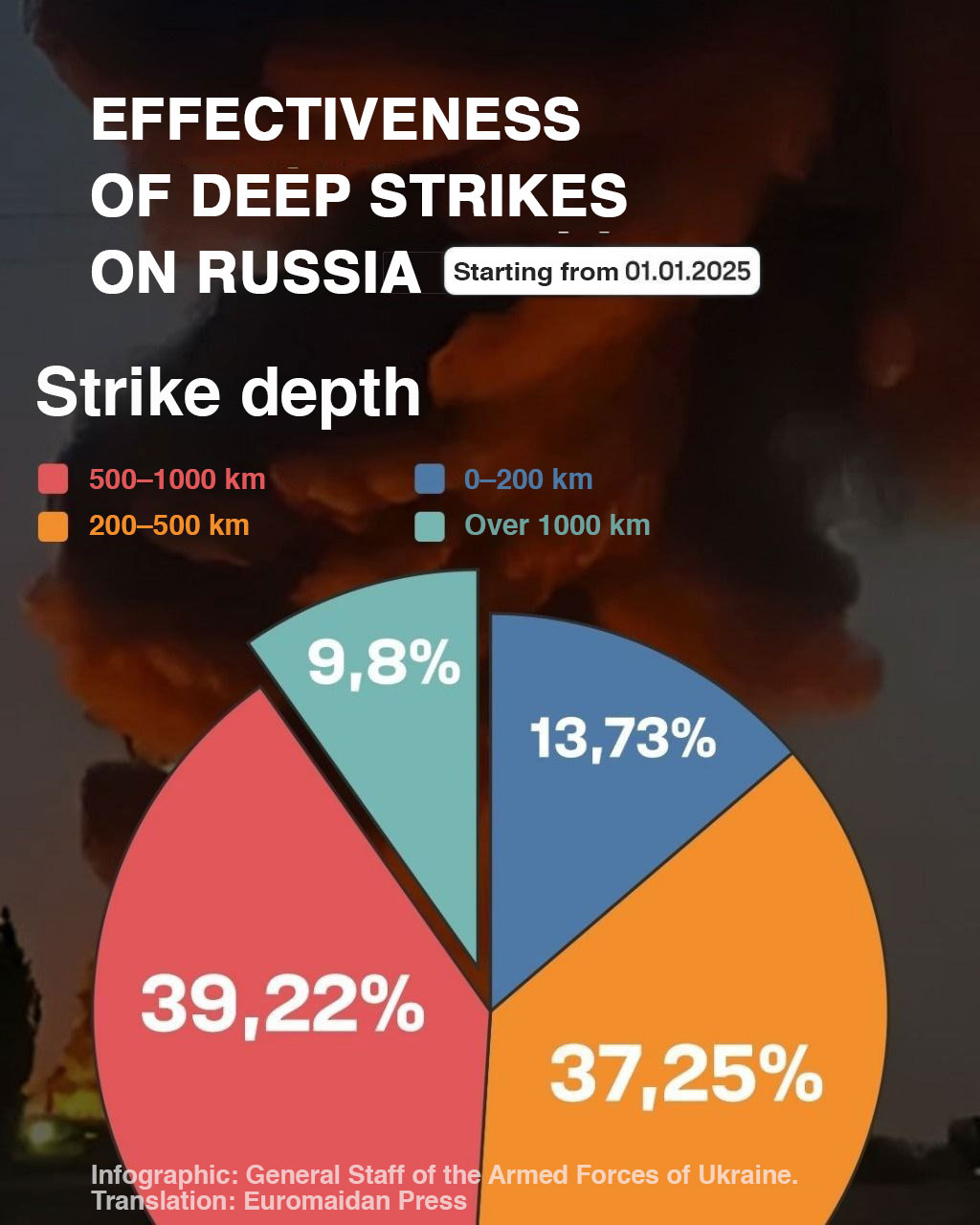
The General Staff’s report estimates that the strikes have reduced Russia’s GDP by 4.11% in annual terms. Officials credit the damage to a focus on high-value infrastructure such as refineries, depots, and transport hubs. The statement thanked all personnel involved in the operations and stressed that Ukrainian defense forces are continuing the campaign.
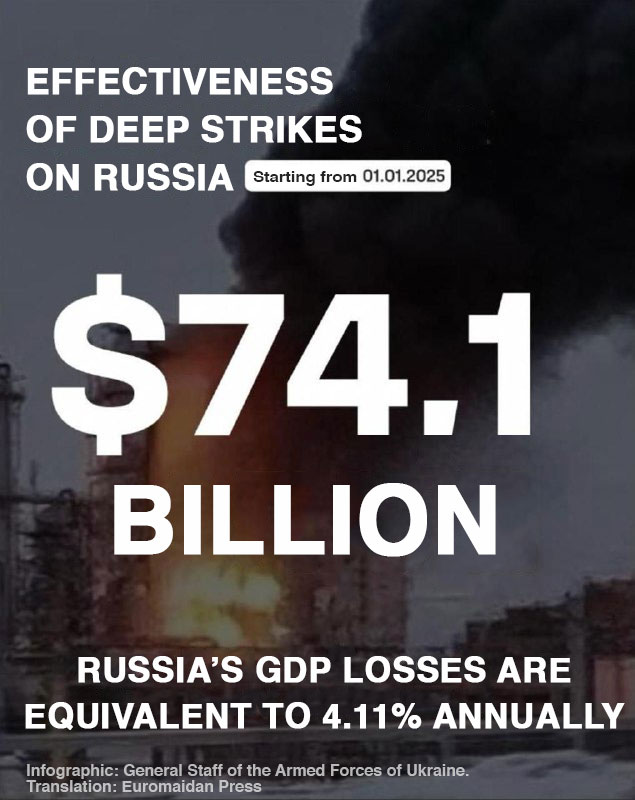
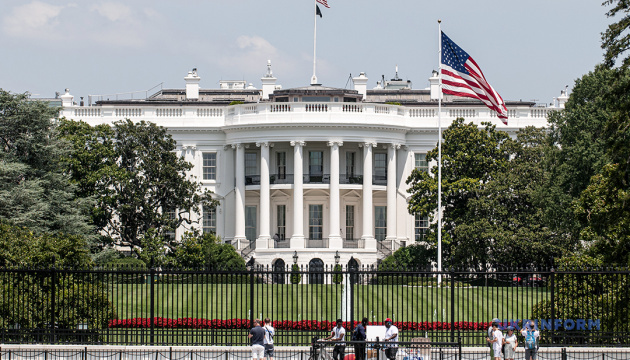

Euromaidan Press spoke with Anton Shekhovtsov, a political scientist specializing in Russian extremism and editor of “Russia Against Ukraine: Russian Political Mythology and the War on Ukrainian Identity.” The book brings together thirteen authors — almost half of them Russian — analyzing anti-Ukrainian narratives in Russian society, revealing the ideological foundations behind Russia’s war.
This interview has been edited for length and clarity.
EUROMAIDAN PRESS: Several chapters in your book deal with genocide rhetoric. What are the most dangerous narratives, and how do they translate into real-life actions?
SHEKHOVTSOV: All authors in this collection who suggest that what Russia is doing is genocide or attempted genocide of the Ukrainian nation — me included — refer to the international definition of genocide adopted by international institutions.
Some Russian officials do not even deny that they are aiming at the genocide of Ukrainians.
They feel that they cannot be punished, not only for what they’re doing but also for what they’re saying. This creates the atmosphere where Russian soldiers, if not directly instructed to kill civilians and engage in acts of genocide, still feel that whatever they do to Ukrainians is fine, that it is normal. You can kill civilians, you can bomb civilians, you can kill children.
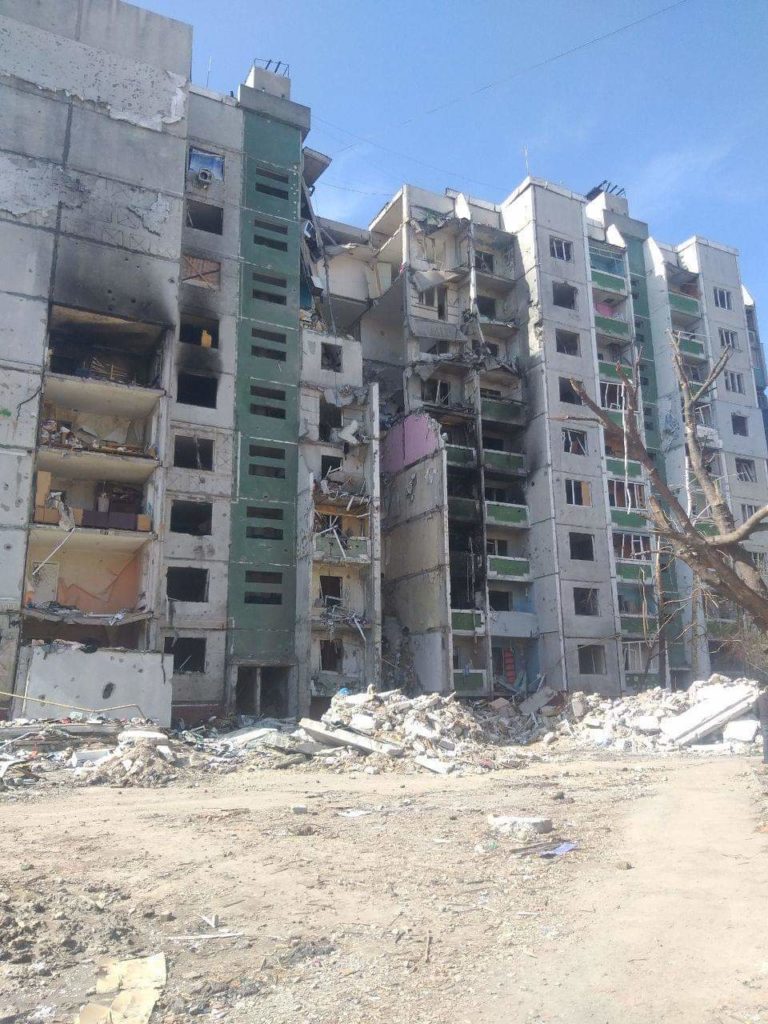
But I feel that it is not just some individual officers and soldiers going crazy and killing everybody they see. I think it is a strategy. When Putin says essentially that Ukraine does not exist, the Ukrainian nation does not exist — what he means is that they should not exist. And the only way for them not to exist is to kill them or to drive them from their territories.
Putin is quite fine if Ukrainians simply leave Ukraine. He is not going to kill Ukrainians in the EU.
He’s fine with Ukrainians becoming an ethnic minority in a particular EU country. But Ukrainians should not have their own Ukrainian nation-state.
Today’s assault is unprecedented in Ukrainian history, as it targets Ukrainian statehood itself — the very idea that Ukrainians can exist as a sovereign people.
EUROMAIDAN PRESS: You have a whole chapter dedicated to Nikolai Patrushev and the siloviki. What drives their worldview, and why are they the harshest Ukrainophobes?
SHEKHOVTSOV: The siloviki are representatives of the power ministries, power agencies, or intelligence agencies—the entire security apparatus, defense, and police. Those people who have power are the harshest Ukrainophobes because they share a worldview that they already formed in the Soviet Union.
These people were born in the Soviet Union and, more importantly, socialized in the Soviet Union, some even during the Cold War. They have a very security-focused view on geopolitics, specifically on how dangerous it is for Ukraine to be an independent state.
There is a combination of this mythological view — I wouldn’t even call it ideology; it’s a mythological worldview — where everything is divided between evil and good. If everything about Russia is good, and if something they consider to be undermining Russian interests is bad, this is evil. They have a black-and-white picture of the entire world.
If Ukraine wants to remain an independent state, siloviki automatically consider this as an evil act, and can basically justify morally, even ethically, that they can do whatever they want against evil.
So they are demonizing Ukraine. And this is one of the major explanations why it’s not simply an occupation that Russia is striving for, but an actual genocide, an actual destruction of the Ukrainian nation. Not just the occupation, but the destruction.
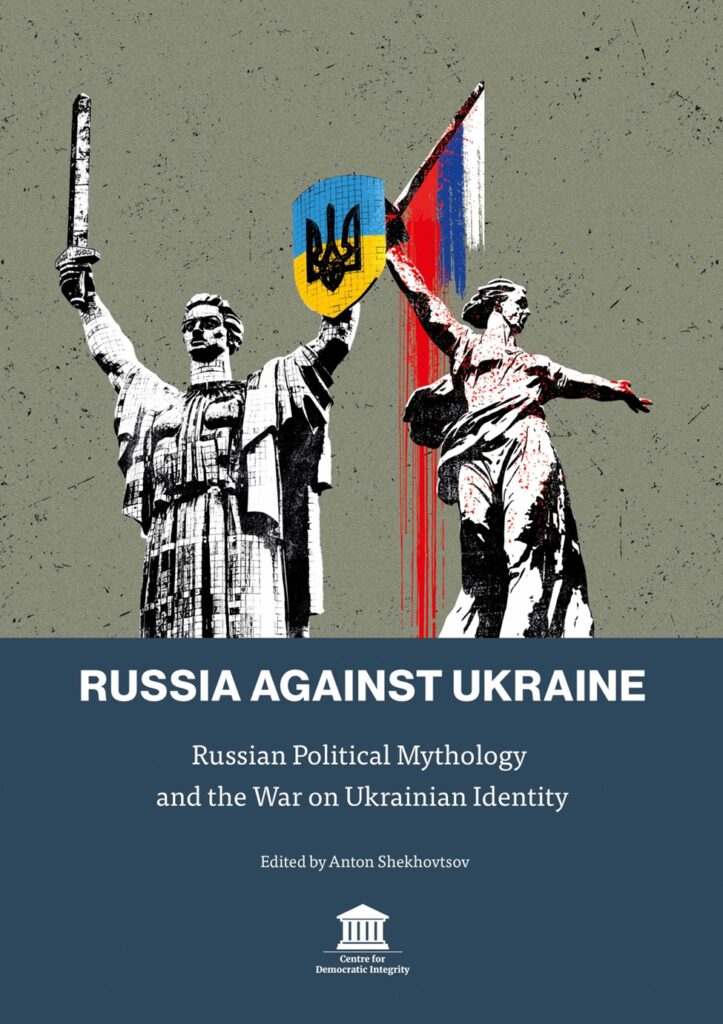
EUROMAIDAN PRESS: Where do these deep roots of Ukrainophobia come from, and how are they connected to the Kremlin’s politics today?
SHEKHOVTSOV: The roots of anti-Ukrainian sentiment go back to at least the 19th century in the Russian Empire. The authors were writing about the distinction between the two types of Ukrainians.
One type is those Ukrainians who have ethnic roots in the Ukrainian cultural group but were very well integrated into the Russian Empire. They were ethnically Ukrainian, but at the same time, they were really part of the Russian Empire. They were Russified, belonging to the empire and not to their own Ukrainian ethno-cultural community.
At the same time, there was another type of Ukrainian. Those were mostly people living in Ukrainian villages. They would speak Ukrainian, and they were considered by the Russian imperial elites as poor, very poorly educated people who should be ruled. They obviously could not have their own state because it was ridiculous. This distinction actually survived the Russian Empire.
Even in the Soviet Union, the Russian Soviet elite distinguished between two types of Ukrainians.
One type is the Soviet Ukrainian, like a Ukrainian communist. This is a good Ukrainian integrated into the Soviet empire. And there was another, the bad Ukrainian — a Ukrainian who wanted to have an independent Ukrainian state, an independent Ukrainian nation. And they were all demonized as Banderites.
EUROMAIDAN PRESS: So the enemy is not the alien one but the one who is very similar but doesn’t want to be us?
SHEKHOVTSOV: Exactly. The Ukrainophobia also stems from the worldview that Ukrainians are not really different from Russians. This is just one branch of the larger Russian tree. There are Greater Russians, Little Russians, and then White Russians. And those who do not agree to that are the enemies. These are bad Ukrainians.
For Putin, he saw these types of Ukrainians. Ukrainians were in the KGB. They were his colleagues. They were not that different from him. Maybe some accents or Ukrainian family names would demonstrate that they were coming from the Ukrainian ethnic cultural group. But the bad Ukrainians, those who said, “No, we are different. We have our own culture, we deserve to have our own nation-state.” Putin’s reaction, not only Putin’s but that of Russian ultra-nationalists, is that you are destroying our Russian nation. You are the separatists.
This explains why Russia expected Ukrainians to welcome their “liberation” in 2022.
The Kremlin genuinely believed that most Ukrainians were still “good Ukrainians” who would reject their democratically elected government. Instead, they encountered a nation that had definitively moved beyond imperial categories.
EUROMAIDAN PRESS: How does this compare to what ordinary Russians think, as opposed to the elites?
SHEKHOVTSOV: What’s interesting is that there is a difference between the annexation of Crimea and the full-scale invasion of Ukraine. Crimea has existed in Russian mythology since the 1990s. The romantic vision that Crimea was somehow lost by the Russians and should return to Russia was there. However, there was no romantic vision among Russians that Belarus should be part of Russia.
There was no social demand for the full-scale invasion.
Russian people — I’m not talking about the elite — there was no request from their side to Putin to start the full-scale invasion of Ukraine. There was no demand for genocide.
There were, of course, these crazy Russian fascists and Russian ultra-nationalists who hated Ukrainians and Ukraine. But for ordinary Russians, while they were really happy with returning Crimea to Russia, the full-scale invasion was still something completely different. It was driven by the elites, driven by a significant part of the Russian elites, but not the ordinary people.

In that sense, the war serves the psychological needs of Russia’s security apparatus more than any popular mandate, making it both more dangerous and potentially more fragile than grassroots nationalism.
EUROMAIDAN PRESS: Is this a modern way of thinking, or has Putin gone back to very old patterns?
SHEKHOVTSOV: I think it’s a radicalization of the old patterns, but this radicalization itself is very modern. I don’t really remember such a genocidal drive of the Russians towards Ukrainians. Of course, there was the Holodomor in the 1930s. However, the Holodomor targeted only one part of the Ukrainian nation — people mostly living in villages and smaller towns.
But today, these genocidal aspects of the anti-Ukraine Ukrainophobia have been radicalized.
Even if we look at the short history of the Ukrainian People’s Republic in the 1920s, which the Red Army occupied in collaboration with Ukrainian communists, it still remained Ukraine. It was Soviet Ukraine, but Ukraine.
But this attack, this aggression against the Ukrainian national identity, is pretty much unique in history. So it is a radicalization of older patterns.
EUROMAIDAN PRESS: Can you end on a more positive note? What can we take away from this research?
SHEKHOVTSOV: I think the positive aspect of what is happening today is that there is very little chance that Russia indeed succeeds in the destruction of the Ukrainian state and the Ukrainian nation. If we look at the history of the Ukrainian nation, Ukrainians were either unable to defend themselves or were always outnumbered, outsmarted by the Russians, and also by Russian military technology.
Never in its history has the Ukrainian national project received such huge support from Europe and the West in general.
Ukraine has never experienced anything like this, and never has such solidarity been present with Ukraine as it is today. Unfortunately, solidarity has eroded somewhat in countries close to Ukraine, like Hungary, Slovakia, and even Poland. Still, the degree of support for Ukraine is the largest in its history.
The book’s findings suggest that understanding Russian Ukrainophobia is crucial for Western policy. These aren’t temporary political grievances that can be negotiated away, but deep-seated imperial reflexes that view Ukrainian independence as an existential threat to Russian identity. Recognizing this helps explain why compromise often fails and why supporting Ukrainian victory serves broader democratic security.
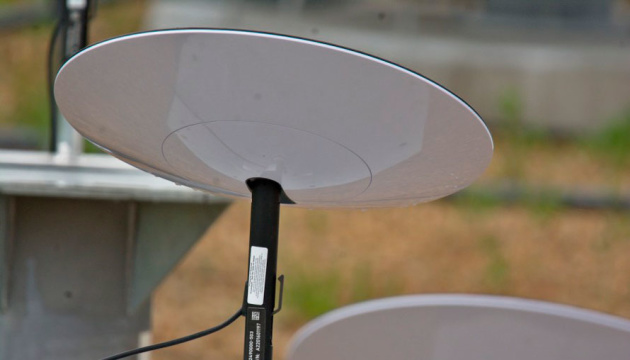
Kyiv says it struck the Syzran oil refinery and Caspian Sea port of Olya in separate attacks

© REUTERS
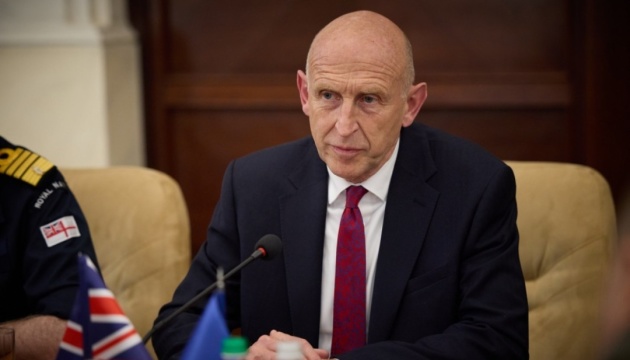
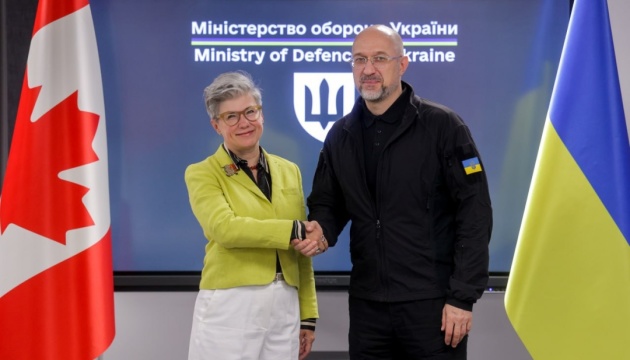
Ukrainian civilians who have been held captive in Russia since 2014 have been released as part of a huge exchange, Volodymyr Zelensky has said.

© Volodymyr Zelensky
Putin’s aggression on the Ukrainian front line has stepped up in the recent weeks, leaving locals with little choice but to flee west. Harry Stourton reports from the eastern town of Dobropillia

© Harry Stourton
